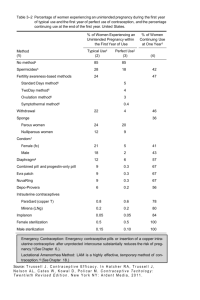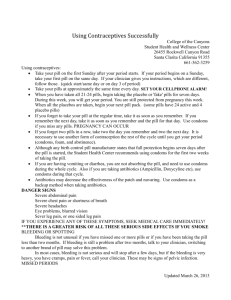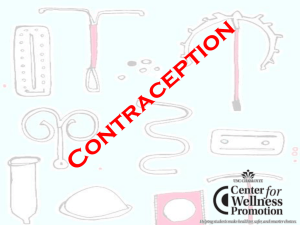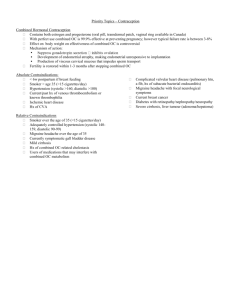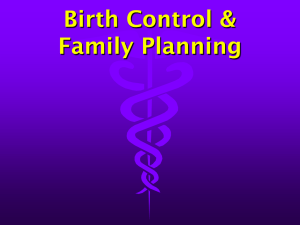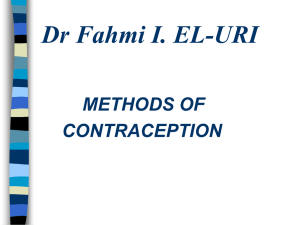Name: Date: Group: Unit 7 Reproduction Vocabulary p 114: To
advertisement
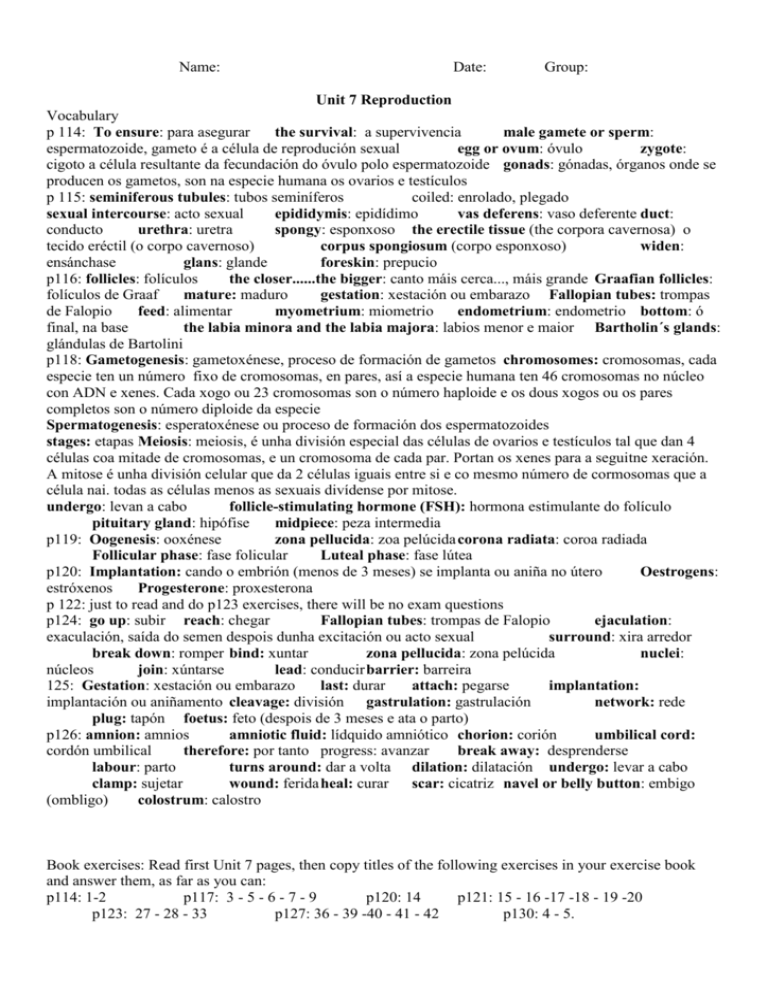
Name: Date: Group: Unit 7 Reproduction Vocabulary p 114: To ensure: para asegurar the survival: a supervivencia male gamete or sperm: espermatozoide, gameto é a célula de reprodución sexual egg or ovum: óvulo zygote: cigoto a célula resultante da fecundación do óvulo polo espermatozoide gonads: gónadas, órganos onde se producen os gametos, son na especie humana os ovarios e testículos p 115: seminiferous tubules: tubos seminíferos coiled: enrolado, plegado sexual intercourse: acto sexual epididymis: epidídimo vas deferens: vaso deferente duct: conducto urethra: uretra spongy: esponxoso the erectile tissue (the corpora cavernosa) o tecido eréctil (o corpo cavernoso) corpus spongiosum (corpo esponxoso) widen: ensánchase glans: glande foreskin: prepucio p116: follicles: folículos the closer......the bigger: canto máis cerca..., máis grande Graafian follicles: folículos de Graaf mature: maduro gestation: xestación ou embarazo Fallopian tubes: trompas de Falopio feed: alimentar myometrium: miometrio endometrium: endometrio bottom: ó final, na base the labia minora and the labia majora: labios menor e maior Bartholin´s glands: glándulas de Bartolini p118: Gametogenesis: gametoxénese, proceso de formación de gametos chromosomes: cromosomas, cada especie ten un número fixo de cromosomas, en pares, así a especie humana ten 46 cromosomas no núcleo con ADN e xenes. Cada xogo ou 23 cromosomas son o número haploide e os dous xogos ou os pares completos son o número diploide da especie Spermatogenesis: esperatoxénese ou proceso de formación dos espermatozoides stages: etapas Meiosis: meiosis, é unha división especial das células de ovarios e testículos tal que dan 4 células coa mitade de cromosomas, e un cromosoma de cada par. Portan os xenes para a seguitne xeración. A mitose é unha división celular que da 2 células iguais entre si e co mesmo número de cormosomas que a célula nai. todas as células menos as sexuais divídense por mitose. undergo: levan a cabo follicle-stimulating hormone (FSH): hormona estimulante do folículo pituitary gland: hipófise midpiece: peza intermedia p119: Oogenesis: ooxénese zona pellucida: zoa pelúcida corona radiata: coroa radiada Follicular phase: fase folicular Luteal phase: fase lútea p120: Implantation: cando o embrión (menos de 3 meses) se implanta ou aniña no útero Oestrogens: estróxenos Progesterone: proxesterona p 122: just to read and do p123 exercises, there will be no exam questions p124: go up: subir reach: chegar Fallopian tubes: trompas de Falopio ejaculation: exaculación, saída do semen despois dunha excitación ou acto sexual surround: xira arredor break down: romper bind: xuntar zona pellucida: zona pelúcida nuclei: núcleos join: xúntarse lead: conducir barrier: barreira 125: Gestation: xestación ou embarazo last: durar attach: pegarse implantation: implantación ou aniñamento cleavage: división gastrulation: gastrulación network: rede plug: tapón foetus: feto (despois de 3 meses e ata o parto) p126: amnion: amnios amniotic fluid: lídquido amniótico chorion: corión umbilical cord: cordón umbilical therefore: por tanto progress: avanzar break away: desprenderse labour: parto turns around: dar a volta dilation: dilatación undergo: levar a cabo clamp: sujetar wound: ferida heal: curar scar: cicatriz navel or belly button: embigo (ombligo) colostrum: calostro Book exercises: Read first Unit 7 pages, then copy titles of the following exercises in your exercise book and answer them, as far as you can: p114: 1-2 p117: 3 - 5 - 6 - 7 - 9 p120: 14 p121: 15 - 16 -17 -18 - 19 -20 p123: 27 - 28 - 33 p127: 36 - 39 -40 - 41 - 42 p130: 4 - 5. Quizz. Choose and circle the right answer: 1. The hormone responsible for causing an ovum to mature in the ovaries is called : a. FSH c. LH d.Adrenaline b. Oestrogen 2. A woman is most likely to get pregnant when? : a.They have taken the contraceptive pill b. Around Christmas time c. On day 14 of the menstrual cycle d. After they are 35 3. Which hormone is responsible for inhibiting FSH production in the Pituitary Gland? a. Pomegranate b. LH c. Oestrogen d. Progesterone 4. IN males, FSH stimulates: a. spermatogenesis b. oogenesis c. ovulation 5. Hormones are transported to : a. target organs via the bloodstream c. the Ovaries d. the Brain b. growth b. the developing Foetus 6. Clones are : a. offspring produced in a test tube which are identical to their parents. b. offspring produced by Asexual Reproduction which are different to their parent organism. c. offspring produced by Asexual Reproduction, which are identical to their parent organism. d. sheep that are identical to each other From this figure: 7. LH is responsible for : a. causing an egg to mature in the ovary b. causing the release of an egg (ovulation) c. inhibiting FSH production d. building up the lining of the uterus 8. LH and FSH are both produced in the : a. Brain b. Pituitary gland c. Ovaries d. Foetus 9. Oestrogen is produced in the: a. Pituitary Gland b. Bloodstream c. Testes d. Ovaries What does this figure shows? : Easy ovulation calculator: a girl started her period January 8 (Day1) and the next period started February 5 (Day1). The length of her period is _____ (between Day1 and the day before Day 1`). This girl expects her next period _____ +/- 3 or 4 days. Her fertile days are ___________ of January, February _____________, and so on. But MOST OF THE WOMEN HAVE IRREGULAR menstrual cycles and ovulation can take place almost other days!!!. This IS NOT a birth control method!!! Starting the pill (oral contraceptive) ( FOLLOW DOCTOR INSTRUCTIONS IS MUCH MUCH BETTER) To start taking the pill, this girl should begin the first period day (Day1) .They will be effective after seven continuous days of use (first time). Take one pill a day until you finish the pack, then stop taking pills for 1 week then start your new pack. If you forget to take yesterday's pill, take it as soon as you remember and take today's pill at the regular time. The risk of getting pregnant is slight, but you can use a second method of birth control just to be sure. How do birth control pills work? Some birth control pills contain two hormones: oestrogen and progestin. These are called combination pills. Some are progestin-only pills. Most women on the pill take combination pills. The hormones in the pill work by keeping eggs from leaving the ovaries. Pregnancy cannot happen if there is no egg to join with sperm. What Is the Birth Control Patch? The birth control patch is a thin, beige, plastic patch that sticks to the skin. It's used to prevent pregnancy. A new patch is placed on the skin once a week for three weeks in a row, followed by a patch-free week. The patch contains similar hormones to the pill. True and False Questions: Choose one answer: The clitoris is found in the vaginal entrance. ( T/ F) The uterus houses the developing fetus. ( T/ F) The best time for a breast self-examination (to prevent breast cancer) is about a week after a woman's period ends, when sexual hormones are low. ( T/ F) The scrotum contains three spongy bodies which, when filled with blood, produce an erection. ( T/ F ) The testes are responsible for the manufacture of sperm and sex hormones. ( T/ F) The Pap test is used to detect ovarian cancer. ( T/ F) Cancer of the testes tends to be a disease of older men. ( T/ F) Adult women should have a pelvic exam once every two years. ( T/ F) Two vaccines are available to prevent the human papillomavirus (HPV) types that cause most cervical cancers (T / F ) Information: Most sexually active people will get HPV at some time in their lives, though most will never even know it. HPV infection is most common in people in their late teens and early 20s. There are about 40 types of HPV that can infect the genital areas of men and women. Most HPV types cause no symptoms and go away on their own. But some types can cause cervical cancer in women and other less common cancers— like cancers of the anus, penis, vagina, and vulva and oropharynx (back of throat including base of tongue and tonsils). Other types of HPV can cause warts in the genital areas of men and women, called genital warts. HPV vaccination is recommended with either vaccine for 11 and 12 year-old girls. It is also recommended for girls and women age 13 through 26 years of age who have not yet been vaccinated or completed the vaccine series. This vaccine is not compulsory and it is not free in Spain. Conception, pregnancy and childbirth cancer cervix cells The central nervous system of the fetus begins to develop during the third and fourth weeks. ( T/ F) The second trimester in a woman's pregnancy is usually the most tempestuous trimester. ( T/ F) Physicians restrict the amount of weight gain during pregnancy because the incidence of complications such as high blood pressure and strain on the heart is much higher in women who gain an excessive amount of weight. ( T/ F) Men have reported pregnancy symptoms including gastritis, nausea, change in appetite and headaches. ( T/ F) (Couvade syndrome (sympathetic pregnancy) ) Current medical opinion states that intercourse is not healthy during the last four months of a woman's pregnancy. ( T/ F) Long-term use of antibiotics by the woman may cause damage to the fetus. ( T/ F) Postpartum depression and psychosis generally fade away and do not require medical attention. ( T/ F) Contraceptive methods The pill works mainly by preventing ovulation. ( T/ F) One of various serious side effects associated with taking the pill is blood-clotting. ( T/ F) The pill may protect women from endometrial and ovarian cancer. ( T/ F) Emergency contraception is most effective if begun within 12 to 24 hours, and it cannot be delayed longer than 120 hours. ( T/ F) Depo Provera is Lethal side effects of Depo-Provera (progestorone injection) have been found. ( T/ F) Information: Depo-Provera is a birth control method for women. It is made up of a hormone similar to progesterone and is given as an injection by a doctor into the woman's arm or buttocks. Each shot provides protection against pregnancy for up to 12 to 14 weeks, but the shot must be received once every 12 weeks to provide full protection. Prolonged use of Depo-Provera may result in loss of significant bone mineral density, increasing the risk of osteoporosis and other side effects. The IUD is an ineffective form of birth control. ( T/ F) Condoms are highly effective protection against STDs that are transmitted mainly through genital secretions. ( T/ F) Failure rates for spermicides can be as high as 25 percent. ( T/ F) Multiple choice questions. Circle the right answer: The reproductive system and health The clitoris: A) is relatively insensitive to touch. B) is homologous to the male scrotum. C) has no known reproductive function. D) ovaries little in size from one woman to the next. The inner layer of the uterus, which is sloughed off at menstruation, is referred to as the: A) fundus. B) cervix. C) perimetrium. D) endometrium. Which of the following is true about female breasts? A) Each breast contains about 15 or 20 clusters of mammary glands. B) There are only a few cultures where breasts are seen as a symbol of femininity. C) Large breasts contain more nerve endings that small breasts. D) The areola is the area surrounding the breast, extending up to the collarbone and down over the rib cage Which of the following is true about the human male penis? A) The penis is homologous to the clitoris B) The penis is an external male sexual organ C) An erection is the stiffening and rising of the penis, which occurs during sexual arousal though it can also happen in non-sexual situations.. D) All of these. The part of the penis most sensitive to sexual stimulation is: A) the tip (glans). the urethral opening. C) the foreskin. D) the corona. B) The secretions of the Cowper's glands: A) help to protect sperm as it passes through the urethra during ejaculation. B)reduce sperm motility. C) are very acid in composition. D) often contain other important cells Cancer of the prostate: A) generally affects younger men. B) is a rapidly growing cancer. C) is usually caused by genetic factors. D) is very common in older men. Conception, pregnancy and childbirth During fetal development: A) some viruses and other diseases are able to pass the placental barrier. B) the head develops before the lower body. C) quickening and fetal heartbeat are first detected during the second trimester. D) all of the above. A woman experiencing many physical symptoms, such as breast tingling, frequent urination, nausea, vaginal discharge, fatigue, and sleepiness, is probably in her _______ of pregnancy. A) first trimester B) second trimester C) third trimester D) first semester Muscle cramps, nerve pains, uterine ligament pains, sleeplessness, irritability, and increased blood pressure during pregnancy are likely symptoms of: A) a healthy pregnancy. B) protein deficiency. C) calcium deficiency. D) antibiotic use. Which of the following is true of episiotomies? A) The incision is left open after the baby is born. B) Critics claim that it is often done for the doctor's convenience. C) They are frequently done in most Western countries. D) Women will feel a sharp pain when the doctor cuts the skin. Which of the following is true with regard to cesarean sections? A) Placenta previa requires the performance of a C section. B) The United States has lower cesarean delivery rates than most western European countries. C) Once a woman has had one delivery by cesarean, she must have all subsequent deliveries by the same method. D) Use of fetal monitors has been shown to decrease the likelihood that the physician will choose to perform a C section. Which of the following is true with regard to the postpartum period? A) Most women experience intense postpartum depression. B) Fathers who are more involved with the parenting role have a higher incidence of depression. C) Research has validated the existence of a "critical period" for mother-infant attachment. D) Most parents experience sleep deprivation during the postpartum period. Which of the following is NOT true of an ectopic, or "misplaced," pregnancy? A) A sexually transmitted disease can increase the risk of an egg becoming implanted in the fallopian tube, abdominal cavity, ovary or cervix. B) Heavy smoking may be associated with an ectopic pregnancy. C) Ectopic pregnancy is difficult to diagnose early on. D) Ectopic pregnancies are readily diagnosed, often within the first three weeks after conception. Amniocentesis: A) has a higher risk of fetal loss than chorionic villus sampling. B) is recommended for women older than age 35 and those who have a previous history of bearing a child with a genetic defect. C) can be performed earlier in the pregnancy than chorionic villus sampling. D) all of these. The most common cause of infertility relates to: A) failure to ovulate. B) complications from sexually transmitted diseases. C) low sperm count. D) hostile cervical mucus. Which procedure involves collecting sperm and eggs and then inserting them together into the fallopian tube, where natural fertilization can take place, followed by natural implantation? A) artificial insemination B) in vitro fertilization C) GIFT (gamete intra-fallopian transfer) D) embryo transfer Contraception and abortion With combination birth control pills: A) relatively high levels of estrogen prevent ovulation by inhibiting FSH production. B) progestin keeps the cervical mucus thick so that it is difficult for sperm to penetrate. C) progestin changes the lining of the uterus so that implantation of a fertilized egg is unlikely. D) all of these. Advantages of combination birth control pill use include: A) nearly 100 percent effectiveness if used properly. B) safety with women over 35 who are cigarette smokers. C) protection against sexually transmitted diseases. D) nearly 50 percent effectiveness if used properly. Which of the following is a health risk for women taking the pill? A) Birth control pills can affect cholesterol levels. B) Birth control pills may slightly increase blood pressure C) birth control pills aren't recommended for women older than age 35 who smoke because of the risk of cardiovascular disease D) All of these. Emergency contraception: A) is called the "morning after pill" because it consists of a single pill and needs to be taken the morning after unprotected intercourse. B) reduces the risk of pregnancy by only 55 percent. C) is not yet available in Spain. D) is available in most places only if the woman is seen by a physician or other health care professional. Which of the following is true of the IUD? A) An IUD is a small, T-shaped plastic device that is wrapped in copper or contains hormones. B) The IUD is inserted into your uterus by your doctor C) A plastic string tied to the end of the IUD hangs down through the cervix into the vagina D) all of them Which of the following is accurate with regard to use of the male condom? A) Most contraceptive failures are caused by defects in the condoms themselves. B) Combined with a contraceptive foam or cream or a diaphragm, male condoms are close to 100 percent effective. C) Condoms should be pulled down to fit snugly over the glans of the penis, leaving no space at the tip. D) For purposes of contraception, a man does not need to put on a condom until he is ready to ejaculate. Which of the following forms of contraception is most effective at protecting against sexually transmitted diseases? A) The Patch. B) Emergency contraception. C) Condoms. D) Depo-Provera injections. Vasectomies: A) the tubes that carry sperm are closed by surgery and sperm cannot leave a man's body and cause pregnancy. B) interfere with sex hormone production. C) have high rates of complications and side effects. D) can be reversed in many cases. When adolescents are asked why they do not use contraceptives, the reasons they give include: A) believing that they couldn't get pregnant. B) problems obtaining contraception. C) negative attitudes and feelings about contraception. D) All of these.

